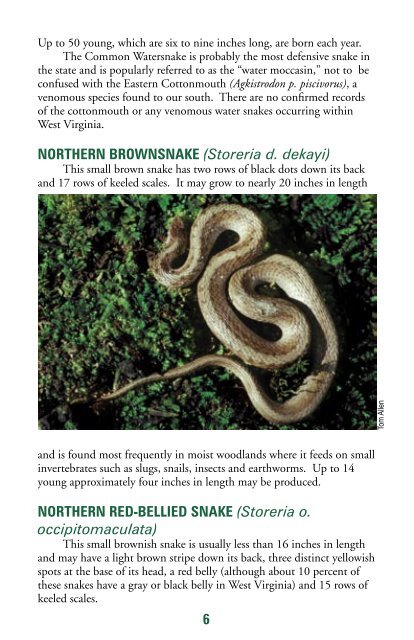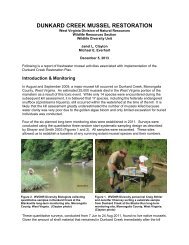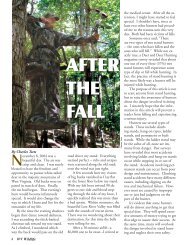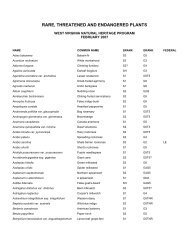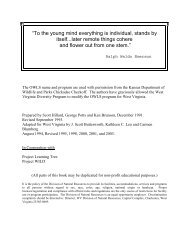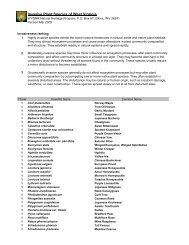Snakes - West Virginia Division of Natural Resources
Snakes - West Virginia Division of Natural Resources
Snakes - West Virginia Division of Natural Resources
Create successful ePaper yourself
Turn your PDF publications into a flip-book with our unique Google optimized e-Paper software.
Up to 50 young, which are six to nine inches long, are born each year.<br />
The Common Watersnake is probably the most defensive snake in<br />
the state and is popularly referred to as the “water moccasin,” not to be<br />
confused with the Eastern Cottonmouth (Agkistrodon p. piscivorus), a<br />
venomous species found to our south. There are no confirmed records<br />
<strong>of</strong> the cottonmouth or any venomous water snakes occurring within<br />
<strong>West</strong> <strong>Virginia</strong>.<br />
NORTHERN BROWNSNAKE (Storeria d. dekayi)<br />
This small brown snake has two rows <strong>of</strong> black dots down its back<br />
and 17 rows <strong>of</strong> keeled scales. It may grow to nearly 20 inches in length<br />
and is found most frequently in moist woodlands where it feeds on small<br />
invertebrates such as slugs, snails, insects and earthworms. Up to 14<br />
young approximately four inches in length may be produced.<br />
NORTHERN RED-BELLIED SNAKE (Storeria o.<br />
occipitomaculata)<br />
This small brownish snake is usually less than 16 inches in length<br />
and may have a light brown stripe down its back, three distinct yellowish<br />
spots at the base <strong>of</strong> its head, a red belly (although about 10 percent <strong>of</strong><br />
these snakes have a gray or black belly in <strong>West</strong> <strong>Virginia</strong>) and 15 rows <strong>of</strong><br />
keeled scales.<br />
6<br />
Tom Allen


